 One of the perks of enrolling your ebook in Kindle Select is that you can also register them for Kindle Monthly Deals. These are like Kindle Countdown Deals, but they run for a month rather than the normal maximum of 7 days. And you can't just ask for it. Your book has to be selected for a deal - The author has no idea when they will happen, they just get an email saying their book has been nominated and, if selected, they get another email saying when the deal will start, which is usually the 1st day of the following month. But the author doesn’t have to accept the deal and whether they should or not is the subject of debate in some Facebook groups. Authors aren’t sure if they are worth the loss of royalties inherent in discounting their book to 99p (or 99c, or whatever), The time authors normally want to provide discounts is when they are launching a new book and want to garner some interest in their existing books by running a promotion, in the hope that new readers will buy into the new book as well. It’s a well-established marketing strategy and is known to work.  But if you are being offered a Kindle Monthly Deal at a time when you aren’t marketing a new book, is there any point in accepting the deal? That was what we wondered when a book by one of our authors was selected for a deal for February. It was actually a second bite at the cherry, because the same book had been nominated for a deal in January but hadn’t been selected for the deal that month. That was convenient because it had given us some time to consider the pros and cons and advise our author accordingly.  The selected book is Book 1 of a 9 book series and if the deal created enough interest, we could hope for some good read through rates further down the line. Unfortunately, while Amazon are happy to discount the book for a whole month, they do little or no marketing for it, so it is up to the author or, as in our case, the publisher to invest in the marketing in order to make the best out of the opportunity. And this is the dilemma faced by most Indie authors when offered a Kindle Monthly Deal. Can they afford to invest in marketing in order to capitalise on the deal? For us it wasn’t too difficult a decision. We had run Kindle Countdown deals for the same book on several occasions and always got a good read through rate, so we believed we would get a good enough read through rate this time to justify the marketing costs. But it wasn’t guaranteed. There was still a risk. Running a marketing campaign for the 28 days of February wasn’t going to be cheap. But we decided to take the chance anyway.  So, we set up some Facebook ads for the book to start on the first day of the deal and run for the full month. We already run ads for the book on Amazon, so there was no need to do anything additional there. In addition to the ads, we put together some social media promotional posts as well, using our usual channels, as they are free, so we may as well use them. And then we waited to see what would happen. The most obvious thing was that we got significantly more sales for the book during the month than we would usually get. To be precise it was 5 times more than we would get for the same book in an average month and double what we got for the month when we ran our last Kindle Countdown Deal. But what about payback – would we get the read through levels we needed to pay for the marketing and leave us in profit? The answer to that was immediate.  Sales of Book 2 of the series started to increase above the average level from about halfway through the month, as early readers finished Book 1. Towards the end of the month, we started to see an increase in sales for Book 3 and, as we moved into March, we started to see the same trend for books 4 onwards. As this blog post goes live, I can tell you that we have run into profit and sales are still rising. But there is a knock-on benefit that has to be taken into account. As we have mentioned before, the Amazon algorithm loves an upward sales trend, and a Kindle Monthly Deal provides that. If the algorithm sees a book that is selling, it does its best (within the rules laid down by Jeff Bezos) to help it sell more, because that helps Jeff Bezos to make more money. What the algorithm does is include the book in the “recommended for you” and “also bought” carousels that a lot of readers use to find their next book. So, the Kindle Monthly Deal has created momentum that is going to carry the book forward for several weeks into the future. And the other thing that the algorithm does is push the book towards KindleUnlimited readers, so you get an increase in KENP reads off the back of the deal.  If you are the author of standalone books, you will be wondering what this might mean for you. Unfortunately, as we were marketing a series, we can’t answer that. But if you have more than one title in your catalogue, it would make sense for satisfied readers to go looking for more books by you if they have enjoyed the discounted book. But if you don’t have any other titles, then there isn’t really any way to make a profit on a Kindle Monthly Deal. You might be able to break even during the campaign if your marketing budget isn’t too extravagant. But you may also gain from the momentum that we mentioned above, which may mean you make a profit further down the line. However, we wouldn’t want you to think that the profit is guaranteed. Much will depend on how much you spend on your marketing and how targeted it is. If you only have one book out, this is not a time for a “throw it at the wall and see what sticks” approach to marketing (if there is ever a time for it nowadays). So, if you are offered a Kindle Monthly Deal, please do give it serious consideration, but make use of data to inform your decision. We would not have been so confident about accepting the deal had we not previously seen such good results when running Kindle Countdown deals, or if we hadn’t seen good read through rates for the series in general. If you have enjoyed this blog, or found it informative, then make sure you don’t miss future editions. Just click on the button below to sign up for our newsletter. We’ll even send you a free ebook for doing so.
0 Comments
 You would think that a box set of 9 full length sci-fi novels, each story 80k+ words in length, priced at £9.99 ($9.99 if you are in the USA) would be flying off the shelf. But it wasn’t. We were wondering why, so we got the team together in Selfishgenie House (a Zoom call made from my living room, to be truthful) and had a bit of a brainstorming session on the subject. Along the way we started to discuss the psychology of purchasing and how it might be working against us. The box set is priced at £9.99, which we think is a bargain. But for the reader that may not appear so. Perhaps they are thinking “If I read the first story and don’t like it, I’ve wasted 8/9ths of my £9.99”.  Why would they think that? Because, at some point, they have bought a box set and that has happened to them, so they don’t want to risk doing it again. We know that books at much lower prices than the box set don’t sell because readers don’t want to take a risk on an author that isn’t well known. So the possibility must exist that people don’t want to risk their money paying more for a box set they may not like. The author of The Magi series is quite well known and has a strong following for a different series. The problem is that the other series isn’t sci-fi, so most sci-fi readers probably don’t know about him and his books. So, as problem solvers, what could we do about this barrier to sales for a box set that should be flying off the shelves but isn’t?  We knew that Kindle Countdown deals had worked for the author’s other series. We had sold the first book of the series at 99p and then got lots of follow-on sales for the rest of the series at the normal price. Would that also work for the sci-fi box set? We decided that maybe we should put book 1 of the sci-fi series on a Kindle Countdown deal for 99p (99c USA) and then promote the hell out of it. But then one of our team pointed out that wouldn’t work unless the reader also knew that they could get the box set for a bargain price. So, how could we get that message across? If we tried to make it part of the advertising copy, it would be far too cumbersome, something along the lines of “Get a sci-fi book for 99p and then, if you like it, buy the whole series for £9.99.” It hardly rolls off the tongue, does it?  But there was something we could do. We could strike while the iron is hot. If someone has just read a book they liked, then the time to sell them the next book in the series is right then, immediately after they have read the words “The End”, because they are probably wanting more of the same. So, it should also work if we do the same thing for the box set. Which is what we decided to do. We edited the manuscript for the ebook of the first book in the series and added this bit immediately after the “The End”. “An Kohli* says, “If you have enjoyed ‘The Magi’, the first book in the Magi series, you can read books 2 to 9 for the bargain price of $9.99 (USA) or £9.99 (UK) with ‘The Magi Box Set’.” Find out more here.” * An Kohli is the name of the main character in the book. We then uploaded the new manuscript to KDP, set the dates for the Kindle Countdown deal and waited to see what happened. Did it work? We are delighted to say that it did.  The 99p book flew off the shelf, though we did pay quite a lot for advertising over the period of the Kindle Countdown deal. But then the box set started to sell as readers bought into the whole series. That was enough to pay back the advertising costs and then reap the rewards. But that wasn’t all. We started to get KENP reads for the box set too, off the back of the same advertising campaign. OK, we don’t earn as much from KENP reads, but money is money! Would the same tactic work for your series box set? We see no reason why not.  Authors are often reluctant to discount their books because they see it as devaluing their brand. Fair enough. If that’s the way you think, then it’s your privilege – but how are your sales looking from on top of your high horse? Some authors have a better reason for not discounting their books, which is that if someone buys the book at the cheaper price, they aren’t going to buy another copy at full price.  But this approach is different, because it uses a sprat to catch a mackerel as we say over here (or my mother used to say, to be more accurate). Even if you haven’t got a box set to sell, but do have more books in the series, the same principle works, though you do have to sell more individual books to recoup your advertising costs. There are other factors that come into play when using this approach. First of all, the surge in 99p sales pushes your book up the Amazon sales rankings. “The Magi” jumped from around 500,000 in the Amazon rankings to 18,000 literally overnight. Its category rankings were even better, at 117, 129 and 196.  Many readers only buy books that other people are reading, so the book appearing to be popular, by being well up the sales rankings, is a definite selling point. The book also starts to appear in a very important list on Amazon, the "also bought" list: “People who bought (insert title of another author’s book) also bought (insert title of your book)”. That list (usually shown in a carousel format) influences some readers, again because they like to read what other people are reading. They feel reassured by other people’s reading choices. And, finally, even though the book only cost the reader 99p, some of them will still review it, so you can gain a few extra reviews for your book which should, if it’s a good review, encourage more people to buy, probably at full price if the Kindle Countdown deal has ended.  And you can do the same thing every 3 months, because that is how often you can run Kindle Countdown deals. Paying for advertising for a book that only costs 99p appears to be a taking a big chance and we would agree that there is a risk there. But with risk comes reward. People who never take risks never achieve anything and that includes not achieving best-seller status. We can’t promise you that your series or box set will start to fly off the shelf. All we can tell you is that after taking this approach, we had a considerable increase in the sale of our box set. If you have enjoyed this blog, or found it informative, then make sure you don’t miss future editions. Just click on the button below to sign up for our newsletter. We’ll even send you a free ebook for doing so. 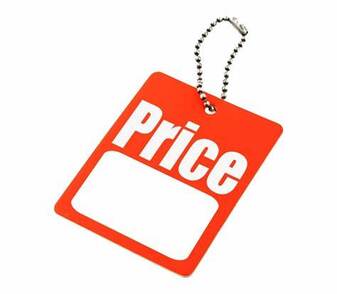 Pricing your book – is it an art or a science? I’m not asking you to pick a side; I’m only offering an opinion. Take it or leave it, but before you make up your mind, you have to understand two things. First of all, there is the economics of pricing. Then there is the psychological aspects of pricing; what assumptions do people make when they see a price tag on a product? Let’s start with the economics of pricing. If you are a big publishing house, there is a lot you have to pay for before the product (book) goes on sale. First off there are the publishing rights for the book – what the author wants for selling his or her soul to Mammon. Many new authors won’t get that, they’ll just be offered royalties based on sales. But a bestselling author can charge a hefty fee up front for giving a publisher exclusive rights to their next book - or even several books. 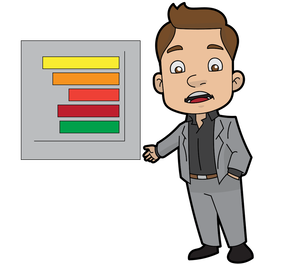 Then there is the cost of editing and proof reading in order to get the book into the best possible version of itself. Add to that cover design, printing and distribution and the publisher has already invested a considerable amount of money that must be recouped. Then there is the cost of marketing, because nobody is going to buy a book if they don’t know it exists. Finally, there are all the “back office” costs that must be recouped: HR, accounting, IT, rent, utilities, etc. What are known as “overheads” but without which no business functions efficiently. Put that all together and there is a lot of money to be recovered and publishers want their money back quickly, because they have shareholders who want a dividend at the end of the year. Consequently, publishers price high because they know that once a book has been out for a while, people lose interest in it because there are other, newer titles coming out all the time, so they must cover their costs and generate a profit in the shortest possible time. 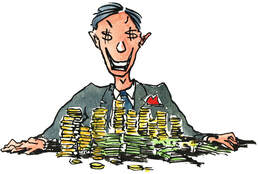 All that marketing is aimed at getting the book into the best-seller list as quickly as possible, so that sales gain some “momentum”. Readers are more likely to buy a book if they think that a lot of other readers have already bought it and that is what the best-sellers list tell them. And there was you, thinking that the best-seller list followed sales, when they are really leading them. So, when you see a book with a list price of, perhaps, £20 ($22) for a hardback, £13 for a paperback and maybe £12 for the Kindle version, all that stuff is what you are actually paying for – not the words on the page. The author will probably receive less than 10% of the sale price for each book and their agent takes a cut of that, reducing it further (are you still sure you want to be published by a big publishing house?). 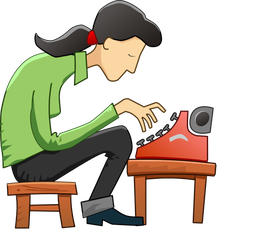 But you are an “Indie” author. You don’t have all those costs to meet before your book goes on sale and you don’t have to recover them quickly in order to satisfy shareholders. You can charge what you like. Therefore £5 for a Kindle version and maybe £8.99 for a paperback doesn’t seem unreasonable. You aren’t greedy – so as long as you make some money from your book, you are happy. Well, you may need to rethink that a little bit. You really need to market your book if you want it to sell and if you want to sell more than a handful of copies, you may need to spend some money on marketing. That means pitching your price at a level that will allow you to cover the marketing cost. Either that, or you will have to settle for a smaller slice of the cake. 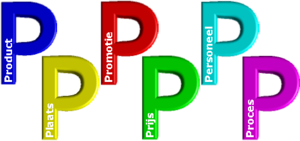 But what about the psychology of pricing? What does the reader infer from the price at which you sell your “product”? Unsurprisingly, there have been books written on the subject. I’m not going to name any as I haven’t read them, so I don’t know if they are any good. But if you are interested, Google “Psychology of book pricing” and they’ll show up in the results. But I did find this blog by Thomas Umstattd Jnr, written in 2020. For a start, Umstattd reminds us that price is so important that it has been included as one of the “P”s of the marketing mix. That means it has to be taken seriously as a subject in its own right. 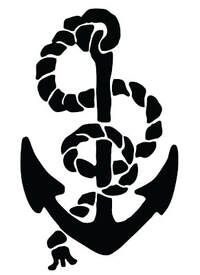 But the real issue on book pricing is what the reader compares the price to. Let’s imagine that it takes 10 hours to read a book. What else could the reader do for 10 hours, and how much would that cost? That is the comparison that readers make when they buy a product. They mentally say to themselves “If I spend my money on this, would it give me as much fun as spending my money on something else?” This is called “anchoring”. They anchor the price they are willing to pay to read your book against the cost of another type of entertainment (or another product) and form an opinion on how good a bargain it is by comparison. If they are browsing books on Amazon or in a bookshop, you are already halfway to winning the sale, but there is still a choice to be made – your book or someone else’s. That suggests that the lower the price you set, the better comparison and the more books you will sell. 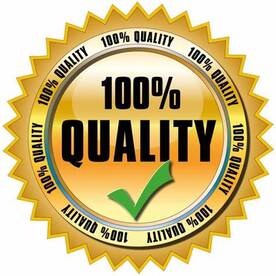 But, of course, the anchor point is only part of the story. Because you have to tell your readers that, whatever comparison they are mentally making, your book is going to represent better value. You have to guide them into making that decision because, otherwise, they may conclude the opposite and not buy your book. Umstattd describes a number of ways you can use your marketing ‘copy’ to influence readers into perceiving that your book represents good value for money. I won’t repeat them here but, intuitively they seem to be good suggestions. But readers don’t just want something to read, they want to read a “good” book; in other words, they want quality. The price should indicate to the reader that they are getting that. It means that setting a low price isn’t always a good strategy. 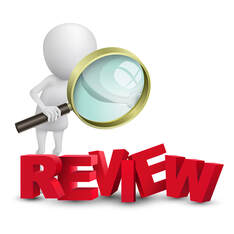 But at the same time, readers will want someone else to tell them that your book is good, so the reviews have to justify the price. If you are only getting 3 star (or lower) reviews, then you can’t charge a premium price for your book because readers won’t believe they are getting “quality” because other readers are saying they aren’t. If you aren’t getting any reviews at all, then you are really in trouble. And if the reader is paying a higher price for the book thinking it is a quality product, then the content has to match the price. It goes without saying that the story has to be excellent. It also has to be well edited, free from typos and grammatical errors and the cover design has to be more than just the basic offerings chosen from the KDP menu. If they aren’t getting that interior quality, the chances of selling other books to the same reader are slim. There is a way of making money by setting a low price and that is to write a lot of books. There are readers who will accept a loss of quality (even in the storytelling) in return for a cheap read. Making 10p a copy on 5,000 book sales is more profitable than making £1 per copy on 100 sales. And you get the bonus of there probably being more reviews posted about the books. 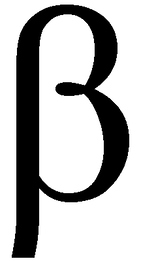 But that is a decision that you have to make for yourself. But you don’t have to make it blind. If you have beta readers, one of the questions you can ask them is how much they would have been prepared to pay on Amazon to read the book if they’d had to purchase it. You will get a range of responses, but you can average them out to give you an indicative price. This blog, on the AuthorImprints website, also takes a look at how to price your books and offers some indicators. One thing seems clear, if you are just starting out, selling your book cheaply in order to generate reviews seems to be a recommended strategy. Once your books gain in popularity and gains positive reviews, you can always increase the price to improve your royalties.  Then there is the 99p (99c) “special”. KDP allows you to reduce the price of your book for up to 5 days, providing it is subscribed to KindleUnlimited. That can be used, in conjunction with advertising, to generate sales because people are more inclined to say “why not give it a try?” at that price. This is especially good if you write a series of books. By heavily discounting the price of Book 1 of the series, people are more likely to by Book 2, 3 etc if they enjoy it. And you have nothing to lose, because if your book isn’t selling then reducing the price makes no difference because 100% of nothing is still nothing. And, finally, there is the “freebie”. I’m not talking about giving your life’s work away for free, just letting people have a taster of what they could get if they buy your life’s work. The freebie is usually a prequel or other introduction to the main series of books. Giving it away for free is a way of generating interest in the main series. But be warned: the freebie must be of at least the same quality as the full book, because even if people are getting it for free, they will still be judging you as an author and you can’t risk that judgement coming back negative. But if the reader likes your freebie, they may buy the book and give it a try. I can say from personal experience that I have bought books off the back of free ones. If you have enjoyed this blog or found it informative (hopefully both) and want to be sure not to miss the next edition, just sign up for our newsletter by clicking the button below. And we’ll even send you a free book for doing it. 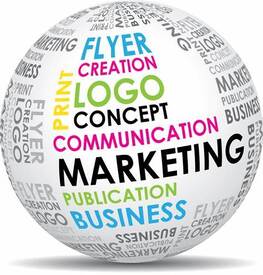 Many an “Indie” author will tell you that the hard part of being an author isn’t the writing of the book, no matter how hard that seemed at the time. No, the hard part is actually selling the book to readers. Let’s face it, it doesn’t matter how good the book is, if no one knows it exists then they can’t buy it. Readers rarely, if ever, just stumble across a new author’s work. It may occasionally appear on Amazon under the heading of ‘People who bought …. Also bought …..” but that is the equivalent of hoping to hit a fish by throwing a stone into the sea. OK, theoretically you could, but it’s unlikely you will. 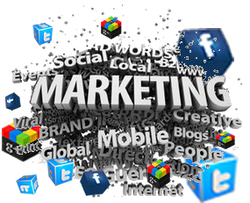 Do not confuse marketing with advertising, because advertising is just a small part of the marketing mix which we will discuss later in this blog. It is covered under the P for promotion part of the mix, but even then it is quite a minor part. Back at the beginning of this year we published a series of blogs that discussed marketing in depth. If you want to read the whole series then look under February in the archive and scroll down to the bottom of the page to start at the beginning. Don’t be confused by the fact that the first blog is Week 5 – the first 4 weeks were looking at the dark arts of publishing. The series continues into March and April But before you go and look at the archive, we’re going to reprise some of the highlights of those blogs to give you a few things to think about. Call them the ‘key messages’. 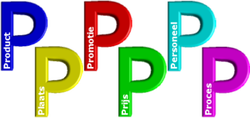 We’ll start with the marketing mix – the 6 Ps. Some marketing blogs talk about the 4Ps, but we’re a bit like Spinal Tap, our Ps go all the way up to 6 (Younger readers may not get that reference). These are:
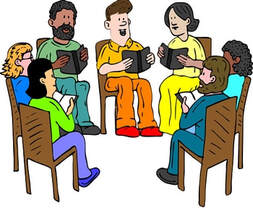 The most important P is people The most important P is people You might think that ’promotion’ is the most important part of the marketing mix, but it isn’t. It’s people. You can 'promote' your ‘product’ as much as you like, but if you aren’t reaching the right people, then you are wasting your time and, probably, your money. Your ‘people’ are the people who read books similar to the ones you write. They are the ones you need to identify and engage with on social media. I say ‘engage’, because if you just ‘promote’ you will lose their interest very quickly. Yes, you can promote, but only as a small part of engagement. You need people to want to follow you, which means having something interesting to say. And if you doubt that, consider this – you’re reading this blog, aren’t you? That is part of our ‘engagement’ with you. Maybe, as a consequence of our engagement, you might take a look at the ‘Books’ page of our website to see what we have to offer – or maybe you won’t. The choice is yours, but the important thing is that you are here, which makes the choice easier. 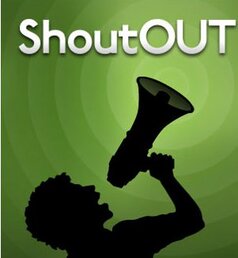 Paying companies to blast out Tweets about your book won’t get you sales -despite their promises of having a gazillion followers. Because only the Tweets (or other social media posts) that reach the sort of people that read your sort of books are of any use and only you can identify and engage with those people. Just as an aside – doing a #writerslift on Twitter isn’t engagement, it is just becoming increasingly annoying because so many people are doing those. And everyone in the list replying to it and filling up notification boxes is even more annoying. We’ve started blocking all the people who do it. We’ll assume from the start that your book is well written, has a good plot, interesting characters, has been properly edited, proofread and corrected. It is therefore fit for purpose. Only you and your Beta Readers can judge that. So that part of the next P, ‘product’, is OK.  After that the most important part of the product is the cover. Despite the warning in the old proverb, people do judge books by their covers. So, yours must be right for your genre. The cover image is what is going to attract people’s attention, so it has to be eye catching and genre appropriate. A picture of a woman in a big bonnet walking through a field of daisies isn’t going to sell many sci-fi books. The second thing about the cover is that it should tell the reader a little bit about what is happening in between the covers. Call it a visual representation of the plot. A picture is worth a thousand words, or so they say, so make sure that the picture on your cover is using those thousand words to best effect. Here’s one of ours which, we think, tells you a lot about the plot. 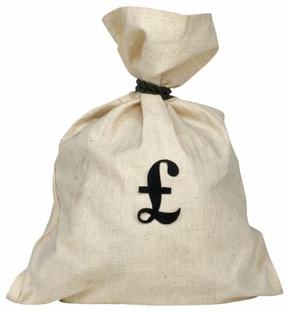 What about price? How much should you charge for your book? If you are a big-name author, you (or, more likely, your publisher) can get away with charging £12.99 ($14.99) for your book. If you are an unknown or Indie author, don’t even think about it. There is some interesting psychology related to pricing. On the one hand, people expect to pay more for a quality product. On the other hand, everyone loves a bargain, even readers. Where you pitch the price of your book is therefore important. Price it an 99p (99c) and readers may think ‘It can’t be very good if they’re practically giving it away’. On the other hand, price it at £12.99 and readers may say ‘I’m not going to pay that much to read a book by an author I’ve never heard of’. We price our ebooks at £4.99 ($5.99) and that seems to be about right for us. But the key messages are (a) don’t undersell yourself and (b) don’t price yourself out of the market. 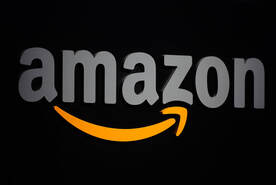 When we talk about ‘place’ we mean the places where you promote your books rather than the places you sell them. We’re going to assume that your book is listed on all the relevant ebook etailing sites and, for those of you that don’t want to give money to Geoff Bezos, all we can say is that if you aren’t on Amazon, you aren’t anywhere. Internet searches always place Amazon at the top of the results, so if someone is actually trying to find your book, that is where it will appear first – and perhaps the only place on the first page of results. Amazon's Kindle Direct Publishing offshoot also allows you to publish in paperback without paying expensive set-up charges or buying a minimum number of copies. But in our terms, place means your choice of social media site(s) on which to engage with readers and promote your work and your choice is important.  If you want to reach young people, then Facebook isn’t the place and Twitter is iffy at best, because young people are always on the newest, trendiest platforms. Only 51% of social media users between ages 12 and 18 use Facebook – the second smallest group. So you need to do some basic research to make sure the platform(s) you are using are the right ones to reach your target audience. But don’t rely on social media alone. Local newspapers and radio stations are always looking for content, so a short item (written by you) will fill some column inches for them or an interview will fill five minutes of radio time. But, again, don’t expect them to find you. You have to reach out to them. Also, check your local community resources (libraries, schools, colleges churches, clubs, societies, etc) for events where you can go along and talk about your work (and maybe sell a few copies). 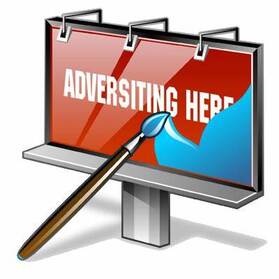 Promotion can be anything from a Tweet or Facebook post to a video, podcast, a free extract or paid for advertising. I don’t aim to cover all of those. Instead I’ll focus on the one that you have to pay for – advertising. Social media has given us all the ability to run relatively cheap advertising campaigns – but which ones work and which don’t? Ask us a question that we can answer. Because, again, it depends on the advertising channel you use. There is no point in paying for and advert on Facebook if hardly any of your target audience ever uses Facebook. We can tell you where we get the best return on our advertising budget – but that would be more confusing because we use different platforms for different books, because different audiences use different social media platforms. What we can tell you is that spending money on Amazon doesn’t seem to work for us. We don’t know why that is, but we have had very little success there. Other publishers and authors tell us that they have had significant success using Amazon, so we can’t explain it. But one important detail about advertising. Makes sure your advert includes the following:
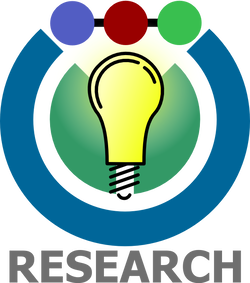 You’re now wondering what I’m going to say about ‘process’. Actually, not a lot. I’ve tried to get the messages in this blog in the order you need to address them. That’s about all the ‘process’ you need to worry about. But if you want to be successful your ‘process’ must also include research:
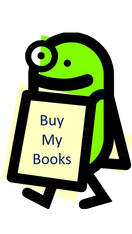 Without that research, you may as well be standing on a street corner shouting ‘buy my book’. And you will be no more successful. And, if doing research sounds like too much hassle, then good luck getting people to stumble across your book by chance. If you have found this blog informative or entertaining (or both) then make sure not to miss future editions by signing up for our newsletter. Just click on the button below. Week 11 - What Price Fame?  Best-selling author Bernard Cornwell Best-selling author Bernard Cornwell In September this year, Bernard Cornwell is bringing out a new “Sharp” novel and to pre-order it for Kindle will cost you £14.99. So, as a self-published, Indie author, what price should you set for your next masterpiece? Let’s look at the economics of pricing a book. Publishers, even quite small ones, have costs they must cover: rent, utilities, editing, proofreading, marketing, distribution, “back office” staff etc. All of these costs have to be recovered and, to help the company’s balance sheet, they like to recover those costs within the financial year in which the book is published. To keep the shareholders happy, the company also needs to make a profit. "the author needs to make a living" Then the author needs to make a living, so some income for the author has to be factored into the price, which also has to take into account the percentage that will be paid to the author’s agent, anywhere between 10% and 20% of the author’s royalties (the author pays the agent, not the publisher). 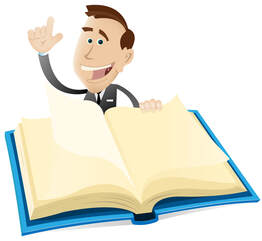 Finally, a well-known author like Cornwell has a loyal fanbase who are eagerly awaiting this book and who are prepared to pay top price in order to be amongst the first to read it. You have seen a similar effect with fans queuing to be the first to be the owners of the new iPhone or PlayStation. Put those three things together and you get the price that is being asked for “The New Sharp Novel” as it somewhat bizarrely titled (I suspect that’s just a placeholder until Cornwell decides what the title will be). Once the publisher has recovered their initial costs, usually after a year, they start to reduce the price of the book while maintaining the level of royalties they pay to the author. You can pick up most of Cornwell’s back catalogue as eBooks for around £6.99. The price of the hardback is usually reduced when the paperback is released, perhaps 6 months after launch. Even paperback prices are reduced over time. 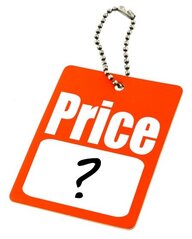 So, how much do you think you should charge for your books? Firstly, you don’t have most of those overheads. You have expended time to write the book and you may have paid for some services, such as editing or cover design, you may also have to pay for some marketing activity, but those costs are miniscule when compared to those of a major publisher. Interestingly you can make the same royalties, per copy, for your book charging quite a modest price as Bernard Cornwell will at £14.99 a pop. The difference in income between you and him is that he will sell hundreds of thousands of copies, but you will probably be doing well to sell a few hundred copies. At least, until you are better known. I don’t know why you got into writing, but if it was to become a millionaire, you are barking up the wrong tree. According to this research, the average annual royalties for an author in the UK in 2018 was a fraction over £16,000. The top 10% of authors earn 70% of all royalties. These are the big, well-known names. A statistician will tell you that it is the top 10% that is keeping the average as high as it is. I’ll just to do the maths for you: if you price your book to pay you £3 per copy in royalties, you have to sell 5,300 copies to make the average annual income – without taking your other costs into account. The mode (that’s statistics jargon meaning what the largest number of authors earn) is much lower than the average. It’s less than £11k, or 3,700 sales. "If you want to make money don't become an author, become a publisher." So, even if you can climb to the dizzy heights of earning the average income for an author, you will struggle to live on it. By comparison, the 2020 UK average wage was a fraction over £30k. It is interesting to note that many of the authors who are signed to mainstream publishers are probably earning less than their editors. They are certainly earning less than the middle ranking managers in the publishing company. If you want to make money don't become an author, become a publisher.  The big money for authors isn’t in selling books; it is in selling the TV and film rights to their books. Not only do they go for a large lump sum (and probably a “percentage of the gross”), they also catapult book sales into the stratosphere. It should be remembered that the first print run for “Harry Potter and the Philosopher’s Stone” (Sorcerer’s Stone in the USA) was only 500 copies, 300 of which went to libraries. It took two years to sell 300,000 copies in the UK. You need to sell around 100,000 copies to make it to the Sunday Times best-sellers list. 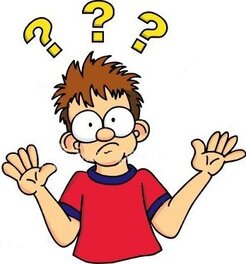 But that hasn’t answered the question: for what price should I sell my book? The answer is, it’s up to you. Some authors believe in setting a low price, hoping to sell more copies. Others set a higher price because they place a higher value on the content. I don’t believe in setting too low a price. I think the readers look at the price and say “If it’s that cheap it can’t be very good” and pass it by. Besides, if you want to drop the price to boost sales, perhaps ahead of the release of a sequel, then you have nowhere to go. "When you sell on Amazon, they set a minimum price" When you sell on Amazon, they set a minimum price (some other platforms also do that). The minimum price is what Amazon thinks they deserve for allowing you to use their platform, which includes delivery via their internet channels. Above that you can sell at whatever price you wish. We set a price of between £2.99 and £4.99 depending on the length of the book. That gives a total royalty between £1 and £3 (approx) per copy. But that is shared 50:50 with the author. 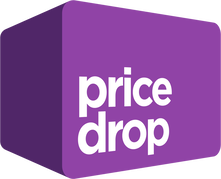 As suggested, there are times when we reduce the price. Amazon will allow us to do that once per title every three months, for up to 5 days per quarter. We will take advantage of that if we want to stimulate interest in a series ahead of the next book being released. Amazon also allows a book to be given away for free using the same parameters and we have also done that. What do the experts say? Well, we came across this article which seems to cover the main points. 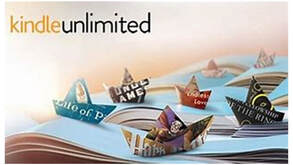 Now to Kindle Unlimited (KU), Kindle Select and Kindle Lending Library. These are three names for pretty much the same thing. Readers pay a subscription to these services (they also get it free with their Prime subscription) and the income for that (after Amazon has deducted its fees) is pooled. Every time a reader downloads and reads a book, the author gets a share of the pool. This is currently about 0.5p per standard page (ie standard Kindle sized page) read. So, if your book is 300 pages long and the reader reads it all the way through, you will earn about £1.50. Depending on the sale price, that may be less than if they bought the book. 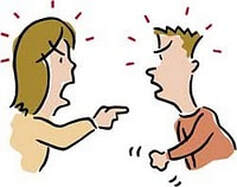 Because of this disparity, there is a difference of opinion about whether to allow your book to be listed on these services (you do have a choice). Part of that is because the big names don’t use these services. But there’s a reason they don’t use them – it takes too long for them to recover their overheads. But Indie authors don’t have that problem. “But if they download my book for free, I won’t make so much money.” is the usual objection. But you will make some money and if they don’t download your book for “free” you don’t make any money. Let me give you an example. If someone sees a film on Amazon they want to watch, but they also subscribe to Netflix, are they going to buy the film from Amazon? No, of course they aren’t. They’re going to download it for “free” from Netflix. The same applies to these other subscription services. The reader may be interested in your book, but if they can’t download it for “free”, they’ll pass it by and find one they can. Just so you know, Amazon’s Kindle Unlimited paid out over $250 million (quarter of a $ billion) to Indie authors in 2019. It currently accounts for 14% of all books read. So, we enrol most of our titles in those programmes, unless the author asks us not to.  By the way, if you are a KU subscriber and you download a book but don’t finish it (for whatever reason), don’t just stop turning the pages. Please keep clicking through until the end. That way the author gets the full share of the pool for that book. It’s a small thing, but it is a good thing to do to help other Indie authors and it costs you nothing. Giving away books for free - other than through the subscription services - is something we are reluctant to do. The thinking is that the free book will raise the author’s profile and the reader will buy other titles by the same author. We have little evidence that, for example, giving away the first book in a series will encourage a new reader to buy the second book. There seems to be plenty of readers who are only interested in free books and will take them, but that is all they do. We don’t even know if they actually read them. It’s a bit like a pub giving away a beer brand for free for a period as a promotion. The drinkers will take the free beer for as long as it lasts, but they won’t necessarily buy it when it’s sold at its normal price. They often go back to their usual tipple. 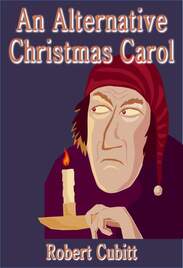 We do give away one title for free every Christmas as a good will gesture. It’s called “An Alternative Christmas Carol” and it gets a lot of downloads. Strangely, when we take it off free offer after Christmas, we often sell a couple of copies. Bizarre! You can find out more about "An Alternative Christmas Carol" by clicking on the link, but if you want it for free you'll have to come back at Christmas. So, that’s pricing for you. If you think you can sell at a high price – try it, but don’t be surprised if readers don’t buy the book. Better to be modest when you start out (< £5) and increase your prices later when you have established your reputation. One final tip: never make your price a whole number of £s (or other currency). For some reason customers prefer to see .99 at the end of a price. We know - it doesn't make sense to us either, but it makes sense to customers and the customer is King (or Queen). If you have enjoyed this blog and found it interesting, make sure you don't miss out on future editions by signing up to our newsletter. Just click the button. |
AuthorThis blog is compiled and curated by the Selfishgenie publishing team. Archives
June 2025
|
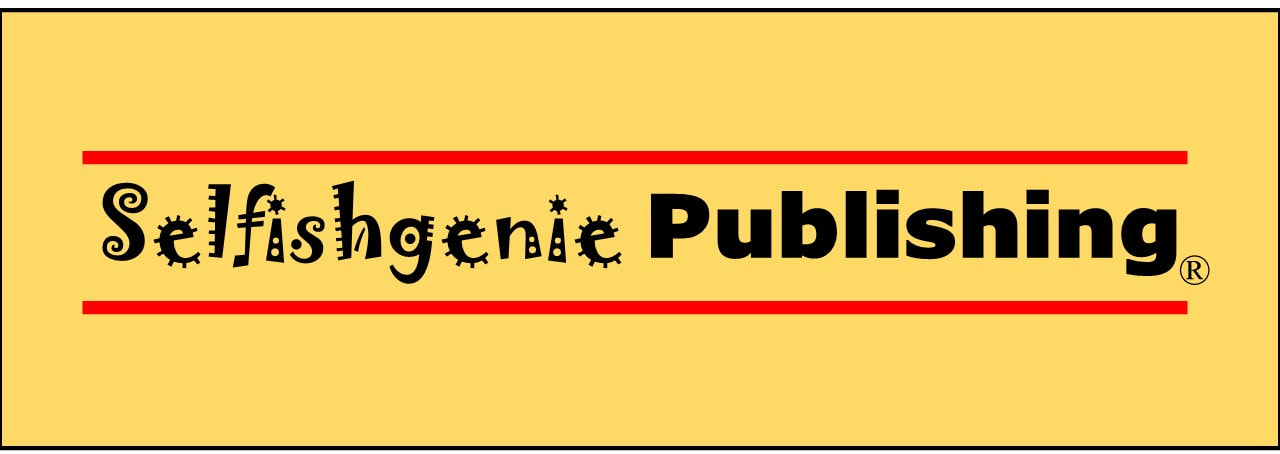
 RSS Feed
RSS Feed